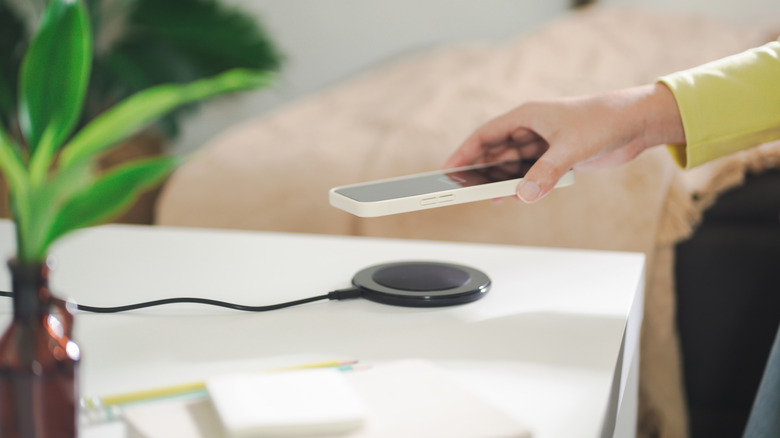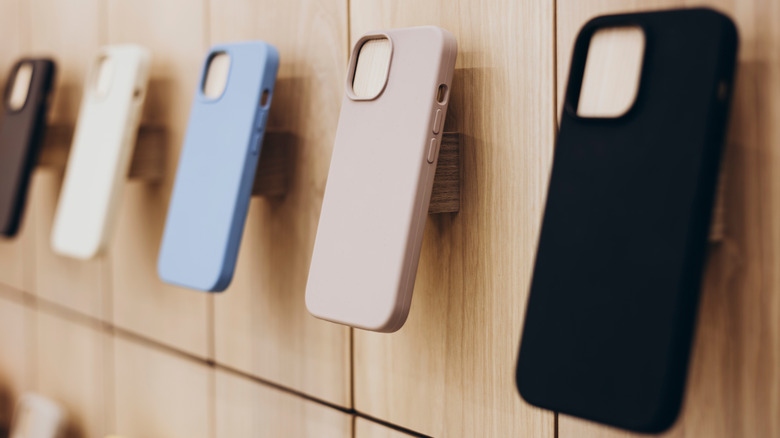Do Most Phone Cases Work With Wireless Chargers? Here's What You Need To Know
We may receive a commission on purchases made from links.
For years, the only way you could top up your phone was by connecting it to a USB cable running from a wall adapter. This proved to be quite an annoying method since it eventually wears out your device's port, clutters your workspace with long cords, and is heavily dependent on the compatibility and working condition of your cable.
Thankfully, wireless charging came into the picture. You no longer have to deal with physical wires constantly getting plugged in and unplugged from your phone. All you have to do is rest your mobile on top of a supported wireless charging pad and let the pad work its magic. Your phone won't have run-down ports; plus, it's so much easier to just pick it back up and go.
Just like wired charging, though, there are both pros and cons to wireless charging. Probably one of the minor (but still inconvenient) drawbacks of wireless charging is its compatibility with phone cases. Can a wireless charger charge your phone even with the case on? Well, actually yes — many phone cases in the market work with wireless chargers. But there's a catch.
What phone cases work with wireless chargers?
If you're on the hunt for a cute phone case but want to make sure it will still work with your wireless charger, there are two things you need to look out for: the case's thickness and its material. Wireless chargers can usually tolerate phone cases with a thickness of at most 3mm. Some wireless chargers, like the OnePlus Warp Charge 30 and Anker 313 Wireless Charger Stand, do support more rugged cases with 5mm to 8mm thickness.
But to avoid charging interruption and get the best performance, you'll want to stick with a 3mm case or thinner. That also means removing any accessories like grips or mounts you've attached to the back of the phone, since they only add extra thickness.
In terms of the material, you'll generally have no problem with cases made entirely of plastic or silicone. Just check whether both the interior and exterior of the case are really non-metallic — some cases feature built-in magnets and metal ring holders. There should be no external metallic materials anywhere near your phone, and the charger too. This includes items you might insert into the case, such as coins, keys, credit cards, or security badges.
Leather cases work fine with wireless chargers, as well. But you might experience circular imprints on the case after charging because of the compression of the material. You can always remove your leather case to avoid this issue.
All of these restrictions are due to how wireless charging works. The transmitter coil in wireless chargers needs close proximity to the receiver coil on your phone. The less distance there is, the better the transfer of energy, making 3mm and thinner cases with no back attachments work best. Material-wise, metals and magnets both interfere with the electromagnetic transfer of energy, so you should steer clear of them at all costs.

